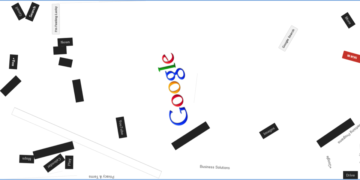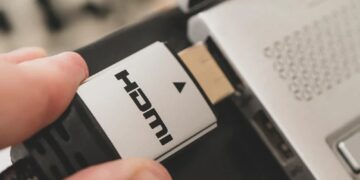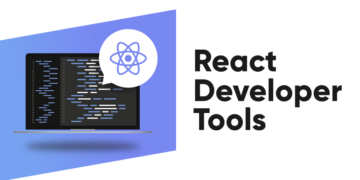In today’s digital-first world, sharing photos online is common—whether it’s through social media, websites, or blogs. But with this convenience comes a growing problem: image misuse and copyright infringement. Many individuals and businesses face the challenge of their images being stolen, reused, or misrepresented without permission. That’s where AI Reverse Image Search comes into play.
This innovative technology goes beyond traditional keyword-based searches and leverages artificial intelligence to trace images, find duplicates, and even identify manipulated versions. For photographers, content creators, brands, and everyday internet users, it has become an essential tool to protect online photos and digital identity.
What is AI Reverse Image Search?
AI Reverse Image Search is the process of using artificial intelligence to find images across the internet that match or resemble a given picture. Unlike simple reverse searches that rely on pixels or exact matches, AI-based tools analyze image features, objects, colors, and even patterns to deliver more accurate results.
For instance, if you upload a photo of a painting, AI reverse image technology can not only find duplicate photos but also detect cropped, filtered, or slightly edited versions. This makes it a far more powerful solution compared to traditional search engines.
How Does Reverse Image Search AI Work?
The power of reverse image search AI lies in machine learning models and computer vision. Here’s how it works step by step:
- Image Upload – The user uploads or pastes an image URL.
- Feature Extraction – The AI scans shapes, objects, colors, and unique patterns.
- Contextual Understanding – Unlike basic search, AI can understand “what” the image represents (e.g., a brand logo, a product, or a face).
- Search & Matching – The system compares the extracted features with billions of indexed images across the internet.
- Results – Matches, similar photos, and manipulated variations are displayed.
So, when people ask, “how to reverse an AI image?”, the answer is simple: by using these AI-powered search tools that break down visual elements and return accurate results.
Why AI Reverse Image Search is Better than Traditional Tools
Before AI integration, reverse image searches were basic. They could find exact duplicates but failed at detecting:
- Cropped or rotated images
- Altered color tones
- Photos embedded in collages
- Watermarked or low-resolution versions
With AI reverse image, the search is not pixel-perfect but intelligent. It looks at the “essence” of the image, making it ideal for spotting stolen or modified pictures online.
This is why best AI reverse image search tools are now being used by:
- Photographers – To track unauthorized photo usage.
- Businesses & Brands – To protect logos, product shots, and ads.
- Bloggers & Content Creators – To prevent plagiarism.
- Everyday Users – To check fake profiles or scams.
Reve AI Image Generator & Reve Image AI: Understanding Their Role
You might have come across terms like Reve AI Image Generator and Reve Image AI. While they sound similar, their purposes differ:
- Reve AI Image Generator – A tool that creates AI-generated visuals. These images can sometimes get misused online, making reverse image search critical to track them.
- Reve Image AI – A system that analyzes, searches, or protects visual content using artificial intelligence.
When used together, they show the two sides of AI’s power in visuals: creation and protection. If you create with AI, you must also protect with AI.

How AI Reverse Image Search Helps Protect Online Photos
Here are the main ways AI reverse image search safeguards your digital assets:
1. Detecting Stolen Content
If someone lifts your photo from your portfolio or social media and reposts it without credit, AI can help you track it.
2. Monitoring Brand Reputation
Brands can monitor if their logos or product images are being used in misleading ads or counterfeit listings.
3. Fighting Fake Profiles
Many scammers use stolen profile pictures. By running a reverse image search AI, you can confirm if someone’s profile photo is genuine or stolen.
4. Copyright Protection
Content creators and photographers can use best AI reverse image search tools to enforce copyright claims and DMCA takedowns.
5. Identifying Manipulated Images
Even if someone edits, filters, or crops your photo, AI reverse image tools can still detect it, unlike traditional searches.
Best AI Reverse Image Search Tools
Here are some widely trusted options:
| Tool | Key Features | Best For |
|---|---|---|
| Google Lens | AI-powered, mobile-friendly, contextual search | Everyday users |
| TinEye | Finds duplicates, detects altered images | Photographers & businesses |
| Bing Visual Search | Identifies products, objects, and similar visuals | Online shoppers |
| Pixsy | Tracks photo theft and help file copyright claims | Professional photographers |
| Yandex Images | Strong in regional/global image matching | General use |
These tools answer the common question: “What is the best AI reverse image search?”. The answer depends on your use case—personal verification, brand monitoring, or copyright protection.
How to Reverse an AI Image Step by Step
If you’ve created or encountered an AI-generated image, you might wonder how to track it online. Here’s how to reverse an AI image easily:
- Save or copy the AI-generated image.
- Visit a best AI reverse image search tool (Google Lens, TinEye, or Pixsy).
- Upload the image or paste its URL.
- Let the AI analyze and return results.
- Review duplicates, modified versions, and sites using your image.
This process is especially important if you’re using Reve AI Image Generator, as AI-generated images can easily spread without proper attribution.
The Future of AI Reverse Image Search
As deepfakes, AI art, and synthetic media continue to grow, the need for reverse image search AI will only increase. Future developments may include:
- Deeper Contextual Understanding – Recognizing not just objects but also intent.
- Real-Time Monitoring – Alerts when your image appears online.
- Blockchain Integration – Linking digital ownership certificates with images.
- Enhanced Copyright Enforcement – Automated DMCA notices sent via AI.
Clearly, AI reverse image is not just a tool but a necessity for digital safety.
Conclusion
The digital world is filled with opportunities—but also risks—especially when it comes to image misuse. Thanks to AI Reverse Image Search, individuals and businesses now have a powerful way to track, protect, and safeguard their visual content.
Whether you’re using a Reve AI Image Generator for creativity or Reve Image AI for monitoring, the real power lies in combining creation with protection. From everyday users to global brands, adopting the best AI reverse image search tools is no longer optional—it’s essential. So next time you ask yourself, “How can I protect my online photos?”, remember the answer lies in AI reverse image search—your digital guardian in the era of visual content.


























